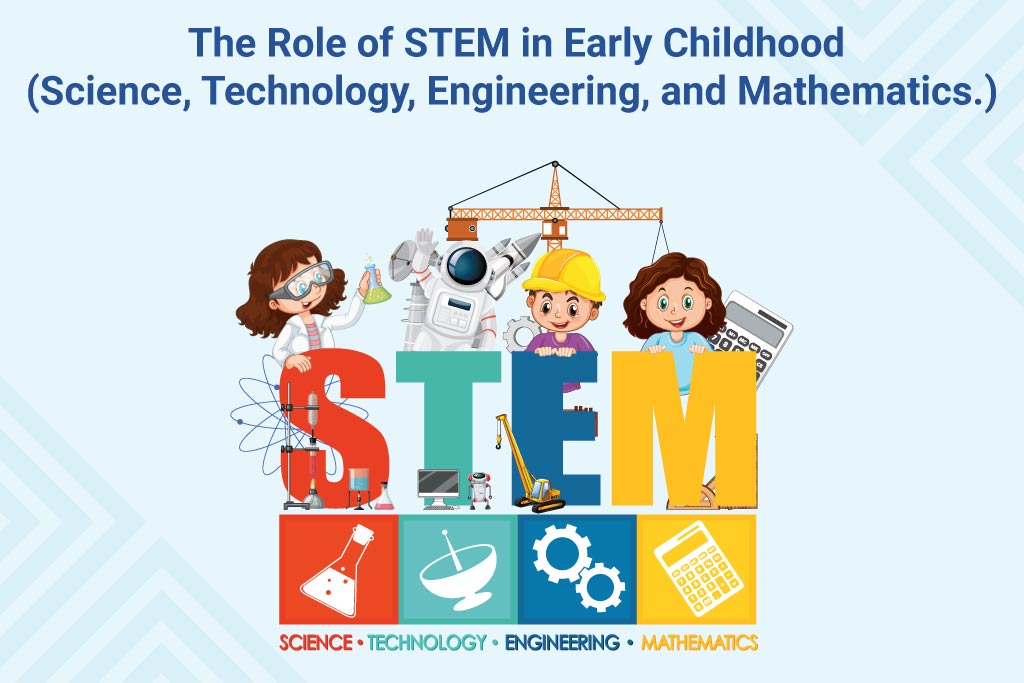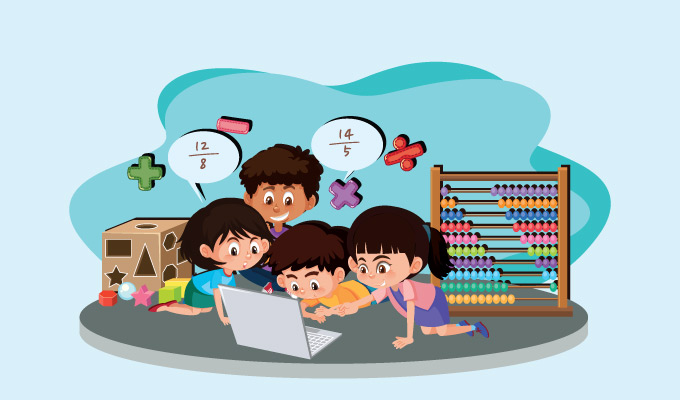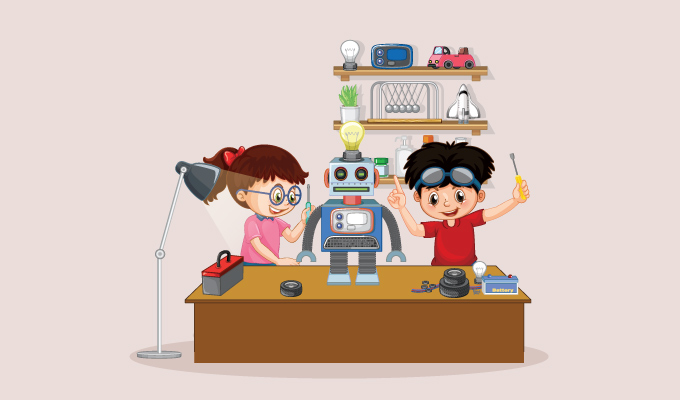Importance of STEM in Early Childhood

In life, learning should be an ongoing process. At each stage, there is always something to learn. It is only when we stop learning we stop to grow. If one wants to keep the spirit of learning alive, kids can become a great source of inspiration.
While it is great to draw inspiration from kids, there are certain ways we can help them grow even better. STEM (Science, Technology, Engineering, and Mathematics) is an interesting approach designed for young minds to build a strong foundation and strengthen creativity.
Want to Boost Your Child’s STEM Learning from an Early Age?
A] The Role of STEM in Early Childhood
The role of STEM in early childhood is as critical as learning phonics. The activities involved in STEM encourage children to explore, ask questions, and find answers. These not only develop problem-solving skills and boost creative thinking but also improve their communication and collaborative skills.
Early childhood is a period of exploration, and hands-on activities enhance their imaginative power. The activities include building with blocks, counting objects, sorting shapes, playing with water and sand, looking at bugs under a magnifying glass, etc. They subtly instill a value of learning through experience.
STEM projects allow children to explore and experiment independently. It gives them the freedom to work on their ideas—in the course, they gain confidence when they see their ideas coming to life. It enables a sense of accomplishment in them.
B] Ways to Integrate STEM into Children’s Learning
Some simple yet effective ways can be integrated into various environments that will help them learn the concepts of STEM in a playful way.
Simple Science Activities:
Activities such as observing the growth of plants, and using food coloring and clear cups of water to show how mixing creates new colours. Filling a container with water, gathering different objects, and allowing the child to guess which object will float. These activities will be fun while engaging children’s senses to learn the water’s properties.
Learning Through Technology:
Let children play educational games that teach alphabet recognition, math skills, and logic on age-appropriate apps. Ensure the screen time is limited which supplements learning.
Hands-On Engineering and Design:
Let children build simple structures like towers and houses from large, softer blocks. Have them use play dough, popsicle sticks, and similar items to create bridges. Allow them soft launch objects like cotton balls and see how far they go. These simple activities will develop problem-solving, motor skills, and an understanding of force, motion, and balance.
Fun with Math:
Learning can be fun when mixed with practical games. Allow them to count toys, visualise shapes in the environment, teach numbers using songs, and many other interesting ways can be adopted to make math fun and a fulfilling experience.
Engaging with Nature:
Take children on nature walks and guide them to observe plants, animals, and other elements of the surroundings. Engaging with nature through this approach will develop deep observational skills. This will also build a sense of patience and understanding of the ecosystem.
C] Benefits of STEM in Early Childhood
STEM is an outstanding method that comprehensively covers the major areas through simple and practical activities.
Develops Problem-Solving Skills: STEM activities involve various real-world challenges, and children’s engagement in them develops problem-solving skills. For example, children create ramps using cardboard to understand how height affects the speed of toy cars. Such experiments facilitate learning basic physics concepts, such as relation of slope and speed.
Boosts Creativity and Curiosity: A lot of STEM activities nurture children’s inquisitive nature and elevate their curiosity to a higher level. For example, exploring insects, observing plant growth, and building a simple water filtration system.
Build a Career foundation: Children who have a strong grasp of STEM will set the stage for their higher education in competitive fields included in STEM. This will ensure their future success as well as the nation’s development, as the subjects are highly relevant.
D] Outcomes of STEM Introduction
- For Children: STEM, at its core, aims to develop learning habits and exploration in children. Activities, materials, and methods serve as the mediums to achieve this. It helps build resilience and cultivates the quality of acceptance, as they often face challenges and failure along the way. Adaptability is also one of the important skills developed, as STEM requires them to think creatively and adjust their approach wherever needed. Through exploration, they become more aware of the world and develop a sense of environmental responsibility.
- For Society: Exposure to STEM concepts early develops a future-ready workforce who are prepared for high-demand careers in technology, engineering, and mathematics. STEM learning enables children to become more scientifically aware, develop logical reasoning and analytical skills, and be better prepared for future decision-making. It develops a learning mindset, which is crucial for a rapidly developing world.
Want to Boost Your Child’s STEM Learning from an Early Age?
E] Conclusion:
STEM education is vital to the overall intellectual development of a child. It is the foundation that is set to ensure the future is in safe hands. The uniqueness of STEM lies in the fact that it teaches the greatest lessons in the simplest ways—from learning the basics of reading to constructing bridges. STEM is one of those lessons that not only helps children to excel in their professional journey but also refines them as individuals.
Similarly, learning phonics is also a crucial aspect of a child’s development. If you are looking for phonics classes in Vile Parle East, get in touch with us today.

Hema Dave
Stemming from the aspiration to nurture and inspire young minds, Hema started her professional journey into education 20+ years ago. She founded 'Phonic Smart' as a trained educationist, an institute committed to equipping children with phonics skills and helping parents and teachers implement them effectively. Her diverse skill sets, encompassing teaching, teacher training, and coaching allow her to contribute valuable insights to the education industry.


